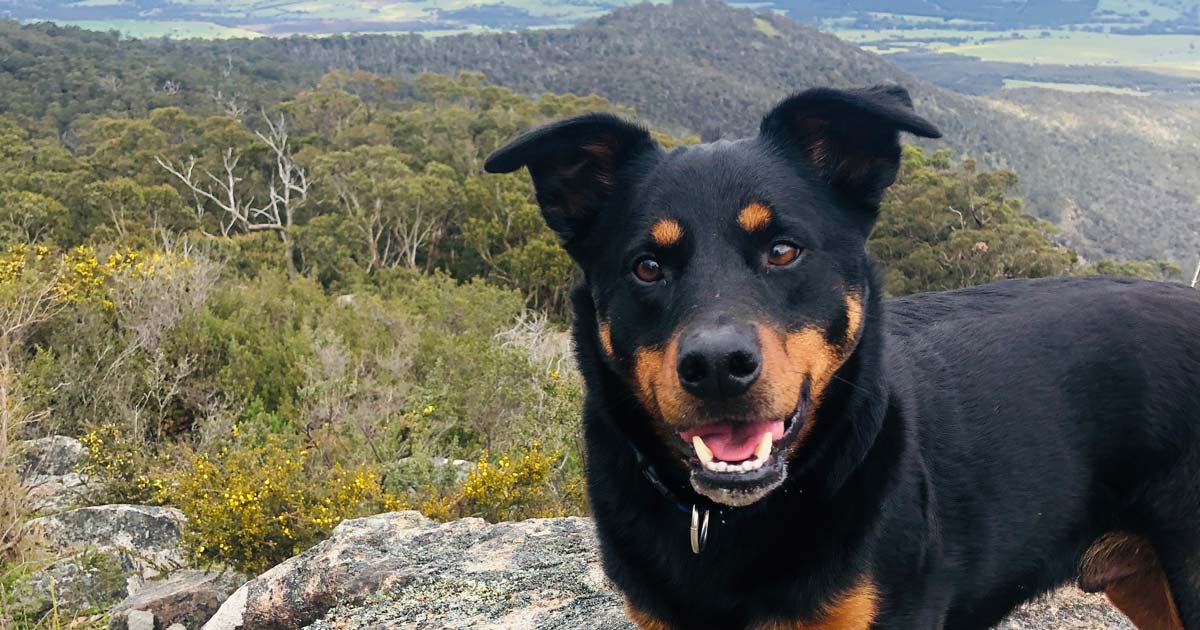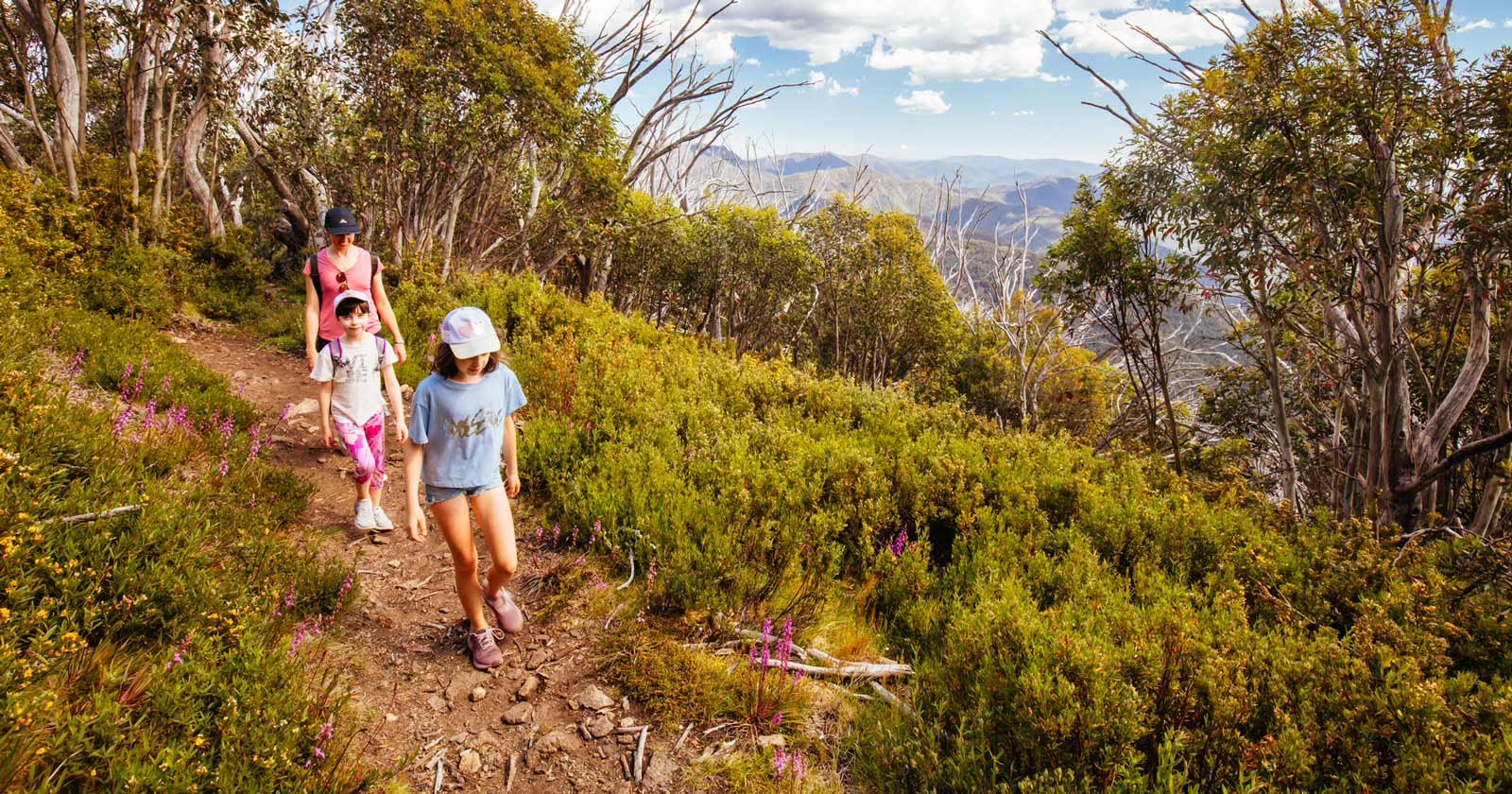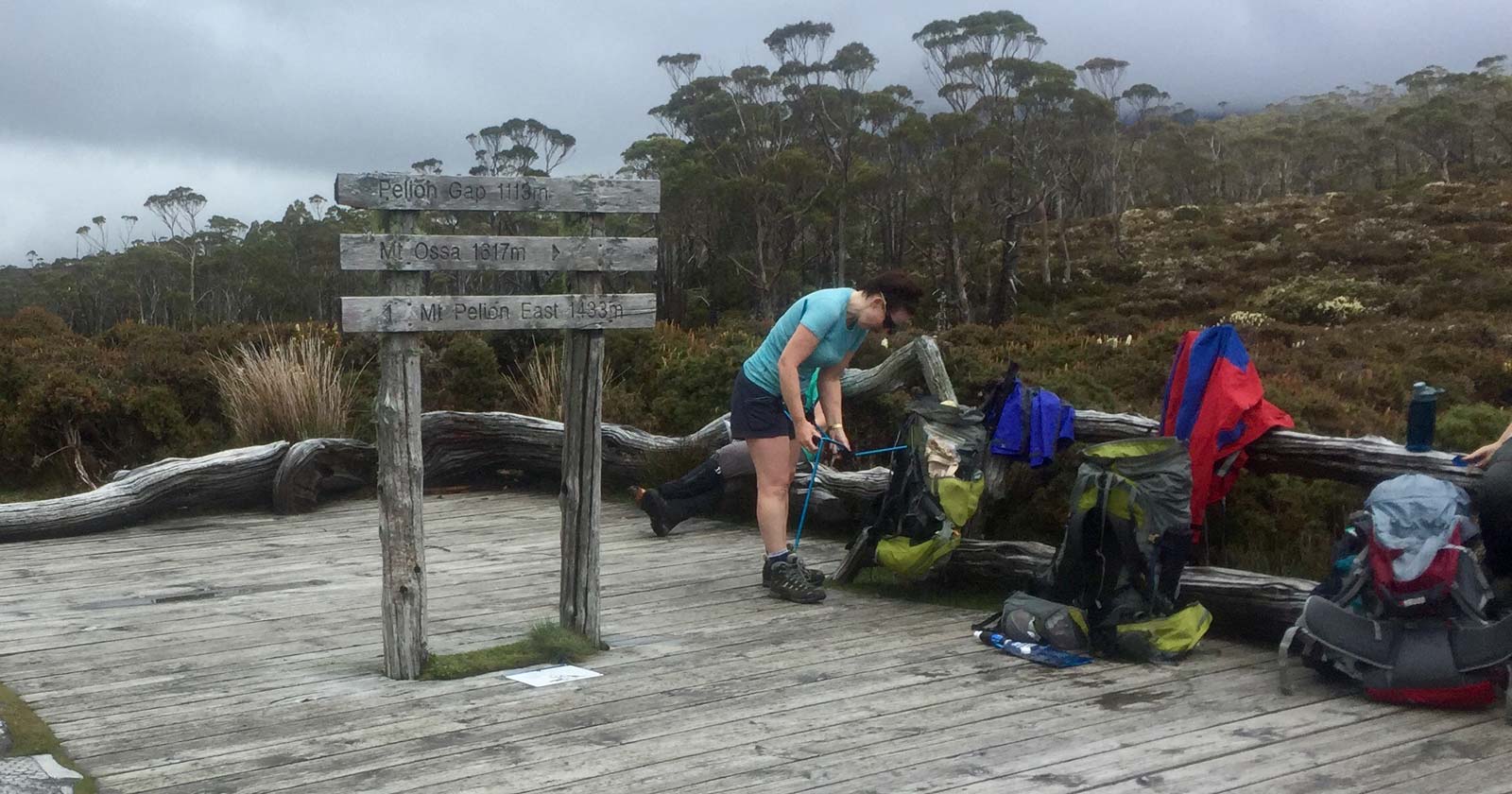If you hike often, there are undoubtably moments where you catch yourself wishing your furry goofball was by your side.
Hiking with dogs can be great fun both for pet parents and canine companions alike. However, many new pet parents are afraid of hiking with their dogs, especially on longer routes. What if something goes wrong?
Well, if you are prepared, there is no reason for your pooch not to enjoy the hike with you! Follow these simple tips and you’ll be all set.
Tips for hiking with dogs

Understand the impact
Dogs can have a significant negative impact on wildlife in Australia if taken into the bush. They can chase, attack, and kill native animals, including endangered species. They can also spread diseases to native animals.
Here are some of the specific impacts that dogs can have on Australian wildlife:
- Predation: Dogs are natural predators and can kill a wide range of native animals, including mammals, birds, and reptiles. Some of the native animals that are most at risk of predation by dogs include small mammals such as possums and bandicoots, ground-nesting birds such as magpies and curlews, and reptiles such as lizards and snakes.
- Disease transmission: Dogs can carry diseases that can be fatal to native animals. Some of the diseases that dogs can transmit to native animals include parvovirus, canine distemper, and leptospirosis.
- Habitat destruction: Dogs can damage native vegetation by digging, trampling, and barking. This can lead to the loss of habitat for native animals.
- Disturbance: Dogs can disturb native animals by chasing, barking, and running around. This can cause stress and anxiety in native animals, which can make it difficult for them to find food, reproduce, and raise their young.
In addition to the direct impacts that dogs can have on wildlife, they can also have indirect impacts. For example, the presence of dogs can cause native animals to become more fearful and reclusive. This can make it difficult for them to find food and mates, and can also make them more vulnerable to predation by other animals.
It is important to note that not all dogs will have a negative impact on wildlife. Some dogs are well-trained and can be controlled by their owners. However, even well-trained dogs can chase or attack native animals if they are not properly supervised.
There are a number of things that you can do to minimise the impact of your dog on wildlife:
- Keep your dog on a leash at all times when you are in the bush.
- Do not let your dog chase or attack native animals.
- Pick up after your dog to prevent the spread of disease.
- Be aware of the presence of other animals in the area and keep your dog away from them.
- Educate yourself about the local wildlife and the threats that dogs can pose to them.
Know before you go
Before you set out on a hiking trip with your dog, make sure to plan where you are going. Many trails and parks in Australia actually aren’t dog-friendly, so check before you go in order to avoid unpleasant surprises. Moreover, it’s always a good idea to plan your route and know exactly how long it will be. If your dog gets tired, or something happens, you’ll want to know exactly where you are.
Start slow
If you haven’t been hiking with your dog before, make sure to start slow. Just like us, dogs need training to increase their strength and endurance. However, they can’t communicate as well as us when they are tired. Moreover, some dogs can get so excited by the adventure that they will overexert themselves to the point of exhaustion if you don’t set the pace.
Start with longer walks and then move on to shorter hikes and see how it goes! Some dogs were basically born for long hikes, but some were not, so you should give your dog time to get used to long walking stretches.
Pay attention to your dog
More important than any rule about hiking with dogs is to pay attention to your dog and know how to recognise the signs that something is wrong. Never hike when it’s too hot outside – high temperatures can be very hard on dogs, plus the ground can get very hot and they are stepping on it with their bare paws. If you notice the dog is tired always take a break and remember to offer water every hour or two!
Practice trail etiquette
The basic principle of trail etiquette is respect for others and for nature. That means – if dogs off-leash are not allowed, respect it. If it is allowed, do it only if you are confident your dog knows how to respect commands such as “come” and “stay”. Respecting the trail also means leaving no trace: and this includes your dog’s poop.
Essential gear for hiking with your dog
“Preparation is key. Having an enjoyable hike with your dog starts with the right gear and an understanding of your dog’s physical limits” Sharon Elber – Professional Trainer at Gentle Dog Trainers.
Leash
Even if you trust your dog completely to obey your commands, bringing a leash is always a must. On some trails a leash is required, and even when it’s not, it’s considered good manners to keep your dog on the leash if there is a lot of traffic on the trail. You know your dog, but other people don’t!
In any case, if you are in the wilderness, you never know what could happen and when you will need to take control of your dog. For this reason, always bring a good strong leash that is easy to clip on and off and you’ll be all set!
Harness
A leash could be attached to a collar, but a harness is way more comfortable for your dog! Especially if you are going on a long hike, a good, comfortable harness is a must as they distribute the weight more evenly than collars which helps prevent injuries in the case of pulling.
Portable water bowl (and drinking water)
Bringing enough water is one of the most important considerations when hiking with your dog. When calculating how much water to bring, make sure to factor in both you and your canine companion. While there could be water sources along the way, it’s never a good idea to count on those. Better to be over-prepared than sorry!
Of course, dogs can’t really drink from a bottle, so you’ll also need a water bowl. Any kind of lightweight bowl will do the job, but you can also find cool collapsible dog bowls designed specifically for hiking.
Final thoughts
Hiking with your dog is really not much more complicated than hiking by yourself. However, ensuring you are prepared and know what to do in any situation will give you peace of mind at the very least. We hope this short guide has helped you get the courage to go on your first hike with your doggo.
Important Note
Most hiking areas in Australia are generally divided as such: National Parks, State Parks, State Forests & other (scenic parks and reserves, historical areas, etc). In general, dogs won’t be allowed in any National Parks or most State Parks. State Forests will generally allow dogs (even off-lead, assuming they are ‘under control’). Dogs in other parks are determined on a park-by-park basis so make sure you check before you go. I have included below, links to key land managers in each state. In some instances, you may need to search for the actual park you plan on visiting.
Victoria | New South Wales | Queensland | Tasmania | ACT | South Australia | Northern Territory | Western Australia






Love hiking with my little mate. That’s him in the pics.
For those in Victoria, the Alaskan Malamute Club and Siberian Husky Club have organised hikes. Open to any breed. Hikes are usually around 16klms – full day. The AMCV used to do a three day hike also, not sure if this is still offered. Hikes are usually done between April and October.
Juzee Celentane that’s a great tip. Thanks for sharing.
Trail Hiking Australia and if people have them, dogs can also carry their own packs. Dogs can also qualify for working titles whether they be pure Mally or other breed, so long as certain criteria are met.
Juzee Celentane dog packs are so cute. Always makes me smile seeing them. 🙂
Trail Hiking Australia
http://www.amcv.org.au/backpacking.html
Love your dog, Darren. Great photo and helpful tips. Don’t think our Max would handle anything but a gentle stroll on the grass these days.
No no and no. I don’t mind dogs but keep the bush dog free.
Jim Roberts free of people too? I’ve seen humans do more damage.
Jim Roberts well in America you can take your dogs in to national parks. Some even off lead and there parks seem to be fine.
Spooks indeed but we’re not in the USA. I met a bloke on a through hike on the AT with his dog. Had its own pack.
Got bitten by an off leash dog in a NP in New Zealand. You must of scared it was the owners stupid reply.
I understand the dog thing but we’ve enough problems with dogs cats horses etc in our/your/My parks and bushland.
Trail Hiking Australia in some areas, human free.
Trail Hiking Australia Can’t say I’ve seen many humans chasing seagulls at the beach. Dogs (and humans) will scare off wildlife – they are a predator and taking a dog into an area changes it from native wildlife habitat to dog habitat.
Take your dog if you like but only into areas where they are allowed and don’t pretend it’s presence (and yours) is without an impact.
Trail Hiking Australia PS Thank you for letting people know the basic doggie do’s and don’t’s.
Ian Foletta thank you. I didn’t think I was pretending anything. Personally if I felt my dog was having a greater impact than I was, I wouldn’t take him. I’ve seen plenty of humans impacting wildlife by feeding them, flying drones, riding dirt bikes and driving 4WDs in parks when they shouldn’t be. My personal view is if you can’t be responsible then you shouldn’t be there.
Jim Roberts dogs are a part of nature and if they are with a responsible owner who has control over their pet and cleans up after them i don’t have any problem with people enjoying nature with their pets so long as it isn’t a national park or wilderness area.
Trail Hiking Australia agree. Including those who are tasked with managing it!!
Craig George whatever
Are you taking your woofer into National Parks?
TJ Craig absolutely no. Only parks and reserves where they are allowed.
Don’t know what everyone’s whinging about then, Trail Hiking Australia! Have fun with your woofer! He’s a lucky dog to have you as his leader! 😎👌🏻
TJ Craig there’s not many parks near us where he is allowed so he knows the trails well and is often leading me.
Enjoy, Trail Hiking Australia!! 👍🏻🇦🇺💚
My dogs are the reason why I started hiking and we travel to new spots to hike. No dogs I wouldn’t bother.
Media: https://www.facebook.com/photo.php?fbid=1015572549872190&set=p.1015572549872190&type=3
Checking out the fluff along the bike path… those little legs get a bit worn out after a while, I think I need a doggy backpack!
Media: https://www.facebook.com/photo.php?fbid=10163394780979478&set=p.10163394780979478&type=3
Couldn’t think of anything worse than carrying a dog around on a hike lol
I’m looking forward to taking my six month old golden on the trails with me! Unfortunately he won’t be able to come trail running with me, because he randomly decides to lay down frequently and darts in front of me from left to right 😅 I’ll have to settle for hiking with him instead and will probably just start with the branding yard at the Youies to get him used to it ⛰️🦮🐾 Thanks for all the info!
Media: https://www.facebook.com/photo.php?fbid=2336802619853960&set=p.2336802619853960&type=3